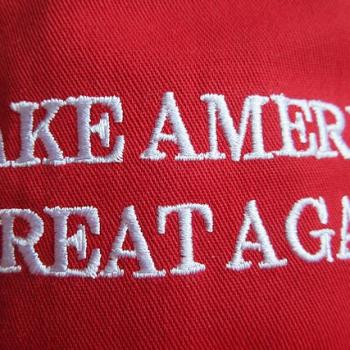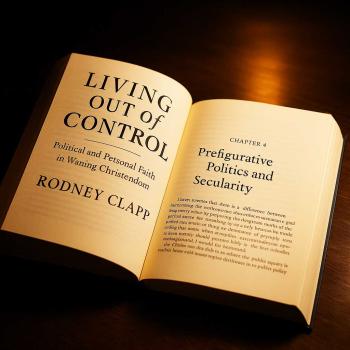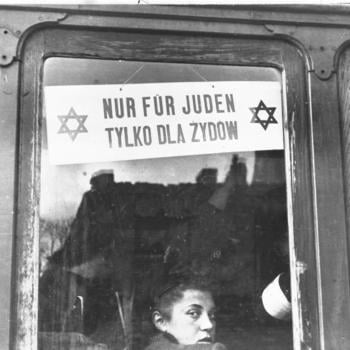Democracy Is Fragile; “It” Can Happen Here: A Lesson from History
Anyone who has studied the political situation in Germany between the two World Wars (1920s through 1930s) knows several things. The so-called “Weimar Republic” was an attempt by Germany at something relatively new there—representative democracy. Before World War 1 Germany had been a constitutional monarchy that functioned as a plutocracy. A relatively small cabal of wealthy and powerful people ran the country giving limited power to “the people” through elected parliaments. That system, put together largely by Prussian statesman Otto von Bismarck in the 1860s, gave the unified German empire the illusion of moving toward democracy.
At the end of World War 1 the Kaiser abdicated in favor of his son who soon also abdicated (or was stripped of his power). The power vacuum was filled by the so-called Weimar Republic, an attempt at a truly representative democracy—a first in Germany’s history. However, the pressures on Germany by the Versailles Treaty and its enforcers and its post-war economic and political struggles undermined the Weimar Republic’s effectiveness. Even more significant however, was the raging internecine political war within Germany between various political parties—none of which had enough power to dominate the body politic.
The rise of the communist Soviet Union and corresponding surge of Bolshevik-like parties and para-military organizations in Germany and other European countries threatened Germany’s fragile experiment with representative democracy. Uncontrolled inflation and chronic under employment led to thousands of men joining paramilitary organizations that engaged in street battles in major cities around Germany.
The worldwide Great Depression that began in 1929 added fuel to the fires of anarchy and chaos that threatened German representative democracy and capitalism. The National Socialist Party (“Nazis”) were only one of several political movements agitating for radical change. Another one was the German communist party. Both were given new strength by the Great Depression. Moderates such as the Social Democrats seemed unable to solve Germany’s growing economic problems or turn around the punitive measures imposed on Germany by the Versailles Treat at the end of World War 1 especially by France.
Although Adolph Hitler and his Nazi Party had been regarded as a fringe politician and radical movement throughout most of the 1920s, by 1932 German representative democracy was on the verge of collapse as was the whole economy. Hitler stepped into the spotlight and began to sound like a mainstream politician. Where once he and his Nazi colleagues had attempted to overthrow the Bavarian government, now he and they were playing “nice” with democracy—or so it seemed. Their passionate German nationalism and anti-communism suddenly appealed to many Germans. Even many religious leaders, both Catholic and Protestant, regarded him and them as the only force strong enough to crush communism and prevent Germany from experiencing a Bolshevik revolution like that in Russia.
The Nazi Party won almost a third of the seats in the German parliament in Berlin in the 1933 election. No other party won quite as many. German president Hindenburg, an extremely popular war hero and head of the German State, appointed Hitler, head of the Nazi Party, Chancellor of Germany—a position like Prime Minister. Other parties agreed to the appointment even though they could have joined together in coalition to oppose it. The previous Chancellor let it be known that they—the other parties—would control Hitler. Hitler let a new popular image of him and the Nazi Party grow—that he and they would play nice and solve Germany’s problems democratically.
Of course, as they say, “the rest is history.” Soon after his appointment as Chancellor Hitler gained Hindenburg’s approval to suspend certain civil rights and declare “emergency measures” to stop communism. When Hindenburg died in 1934 Hitler combined the offices of President and Chancellor and made himself both head of state and head of government. He then gradually but steadily began to operate as the German dictator—arresting and either killing all his opponents or placing them in “detention camps” (the first was Dachau) “for their own protection.” In a very brief time in the mid-1930s Germany’s representative democracy ceased to exist and was replaced, mostly to great acclaim by Germans, with one of the harshest, most repressive dictatorships in history.
One of the greatest quandaries of modern history is why the Germany leaders who were not part of the Nazi movement allowed this to happen. And why did the “average Germans” not only allow it but why did they celebrate it? (When I lived in Germany in the early 1980s I heard some elderly Germans talk about the 1930s under Hitler and the Nazis as “die schönste Zeiten” (the most beautiful times). Theories abound, but most historians agree that 1) The German people came to believe Hitler had reformed himself and was no longer the foaming-at-the-mouth radical of the 1920s and of his own autobiography Mein Kampf (My Struggle)—written while he was in prison for attempting to overthrow the Bavarian government, 2) The German people regarded Hitler as the one person who could stop communism from taking over Germany, 3) The German people were taken in by Hitler’s nationalistic fervor that promised the rise of Germany to a respected world civilization and power, 4) The German people believed Hitler would ignore or even reverse the territorial and economic losses of the Versailles Treaty, and 5) The German people were spell-bound by Hitler’s rhetoric which seemed to put them into a kind of mass hypnotic trance.
By all accounts now, but not necessarily then (1930s), Hitler was a demagogue. Not only many Germans but also many Americans, Brits and Scandinavians fell under his spell. Right up until Hitler declared war on the United States the day after Pearl Harbor Hitler had powerful friends in the U.S. During the 1930s—before Hitler attacked Poland—even the British monarch and then ex-monarch Edward VIII then Edward, Duke of Windsor, was a Hitler sympathizer. In the U.S. folk hero Charles Lindbergh supported Hitler. In 1938 American fashion magazine Homes and Gardens published a photo spread and article about Hitler’s Bavarian retreat. There were popular and powerful fascist-like movements in America, Great Britain and most European countries. Most of them regarded Hitler as a hero.
Many historians, this one included, believe those Hitler collaborators-from-afar simply chose to overlook Hitler’s and the Nazis’ anti-semitism, rhetoric of violence and actual violence toward anyone who opposed them, and sheer power, extreme German nationalism bordering on militaristic jingoism, and deceitful tactics because they were so afraid of communism and allowed themselves to fall under Hitler’s demagogic spell.
Was 1930s Germany really so different, so unique on the stage of world history, that what happened there cannot happen here—in the United States? Are we—the United States—so different, so unique in world history that what happened in Germany in the 1930s (and other countries such as Italy in the 1920s and beyond and in Spain in the 1930s and beyond) could never happen here? Those who are ignorant of history are doomed to repeat its mistakes (George Santayana).
Note to Would-Be Commenters: Do not clutter up my blog comment box with trivial corrections or mere assertions. The purpose of this blog is for me to express my opinions and engage in dialogue (not debate) with interested readers. Do not misrepresent anything I have said, attempt to use my blog to promote your own agenda, or rant. I invite civil, respectful, informed responses that stick to the subject and, whether agreeing or disagreeing, are constructive and helpful.












